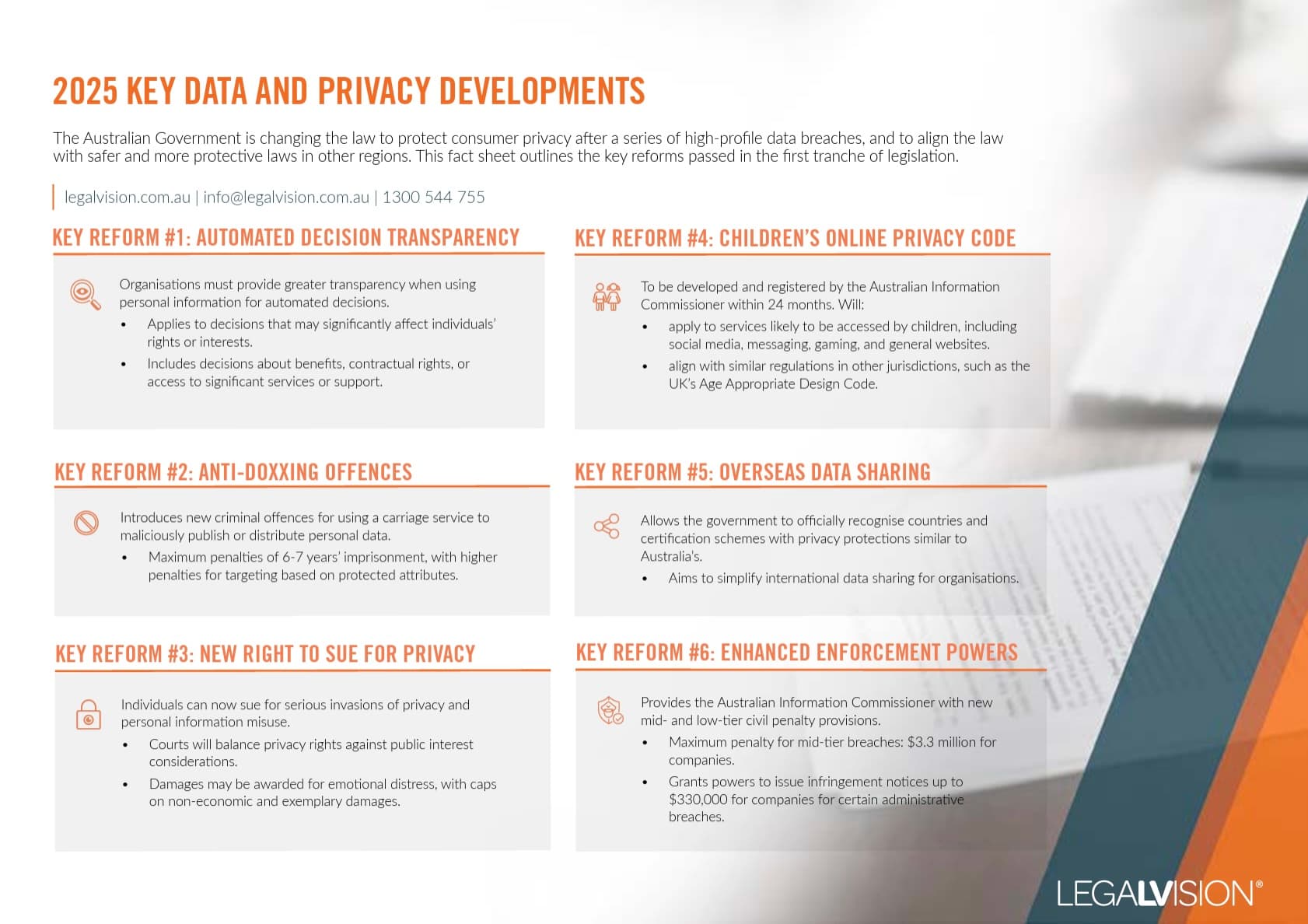As a business or researcher, you may want to obtain materials or data for testing purposes. For instance, research facilities in universities often acquire materials for their researchers or students, such as:
- cell lines;
- DNA;
- plant cells;
- alloys;
- code; or
- other materials.
Depending on the material being transferred, you may encounter a material transfer agreement (MTA). A material transfer agreement outlines the conditions for transferring and using the materials.
In this article, we will explore four key conditions to consider in a material transfer agreement, such as:
- the purpose of the material transfer agreement;
- intellectual property rights;
- confidentiality; and
- special protocols.

This factsheet outlines the Australian Government’s strengthened consumer privacy laws in 2025 following major data breaches and their alignment with global standards.
What is the Purpose of the Material Transfer Agreement?
A material transfer agreement will specify why we are providing you with the materials. This purpose guides what you can or cannot do with them. It is crucial to understand this purpose and abide by the guidelines for using the materials.
In many cases, material transfer agreements serve a similar function to non-disclosure agreements or confidentiality agreements because they involve exchanging materials for internal or research purposes. These agreements often state that you cannot use the materials for commercial purposes. This means you cannot:
- manufacture;
- distribute; or
- profit from the materials in any way.
Instead, once you have completed internal and research uses, you may choose to purchase a license for future commercial purposes, such as:
- developing medication;
- creating a new cosmetic product; or
- forming an ultralight alloy.
Intellectual Property Rights
When you engage in material transfer agreements, you are essentially providing material to someone else. These agreements will clearly state who owns the materials and any:
- developments;
- improvements; or
- changes made to them.
In most cases, the owner of the material will aim to retain all intellectual property rights to it and any alterations made by the other party.
Apart from genetic materials, a material transfer agreement related to data (sometimes called a data transfer agreement) will specify data ownership and any insights derived from it. If the data served as the foundation for creating a powerful AI tool, the data owner would rely on the intellectual property rights outlined in the agreement to claim ownership of the AI tool.
Continue reading this article below the formConfidentiality
When you sign a material transfer agreement, it will specify whether the materials are confidential. This means not only are the materials themselves confidential, but also any work or research you do on them cannot be disclosed without permission from the owner.
This confidentiality obligation is crucial, especially if you are a researcher or a student aiming to publish your findings in an academic journal. You will need to ensure the material transfer agreement permits your paper’s publication or complies with any special requirements, such as seeking permission, giving special acknowledgments, or providing academic authorship.
Special Protocols
Some materials require specific storage and handling procedures. They might react to:
- environmental conditions;
- present hazards if mishandled;
- degrade over time; or
- need special permits for transportation across borders.
You should find these protocols outlined in a material transfer agreement. If they are not, you should receive them separately when you obtain the materials.
When handling genetic materials, you should follow specific protocols. These protocols involve:
- storing the material in liquid nitrogen to maintain its integrity;
- ensuring containment measures, mainly when dealing with biohazardous or infectious materials. Additionally, you may need to wear suitable personal protective equipment;
- using leak-proof containers for delivery and packaging to prevent any spills or contamination; and
- meeting documentation requirements, which may include obtaining special permits for handling or using the materials.
Specific protocols not only affect genetic materials, but they may also involve data. For instance, there might be requirements regarding the format of the data you are transferring. Similarly, if the data is sensitive, such as health data, there could be encryption standards or security measures implemented to safeguard it. Additionally, you may have to adhere to specific software or hardware requirements for processing the data or limitations on how you can access and manage it.
Key Takeaways
Material transfer agreements operate similarly to non-disclosure agreements. They specify:
- the purpose of the materials;
- intellectual property rights;
- confidentiality obligations; and
- any other exceptional circumstances surrounding the materials.
In commercial situations, these agreements often provide a more detailed contract outlining the complex licensing arrangement between parties. Before progressing to that stage, you must grasp what is expected of you in a material transfer agreement.
If you have any questions about a material transfer agreement, our experienced contract lawyers can assist as part of our LegalVision membership. For a low monthly fee, you will have unlimited access to lawyers to answer your questions and draft and review your documents. Call us today on 1300 544 755 or visit our membership page.
We appreciate your feedback – your submission has been successfully received.











